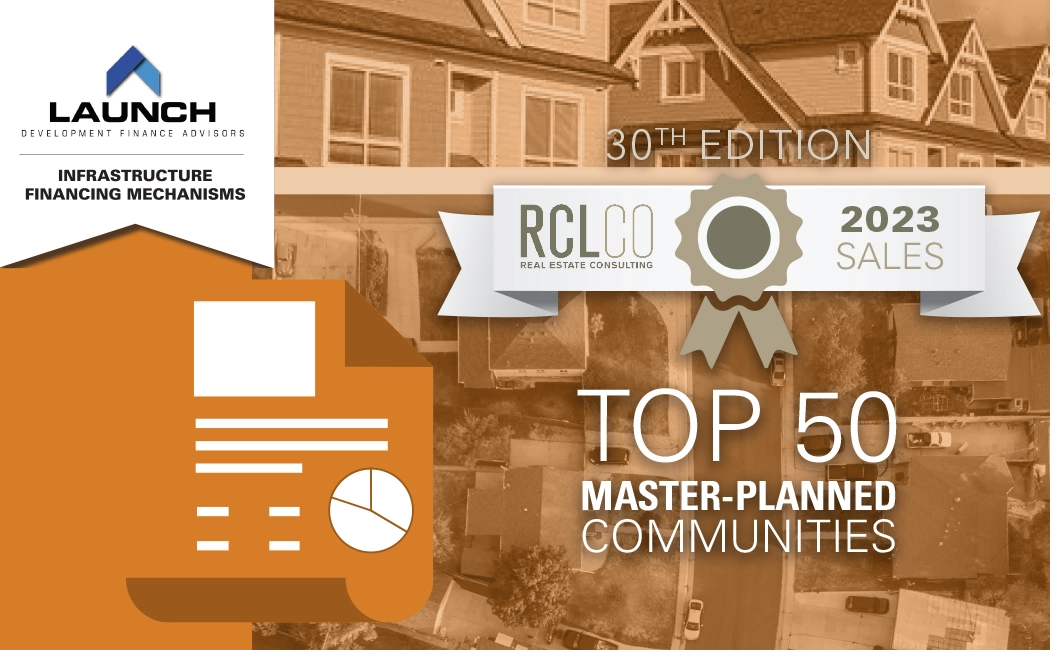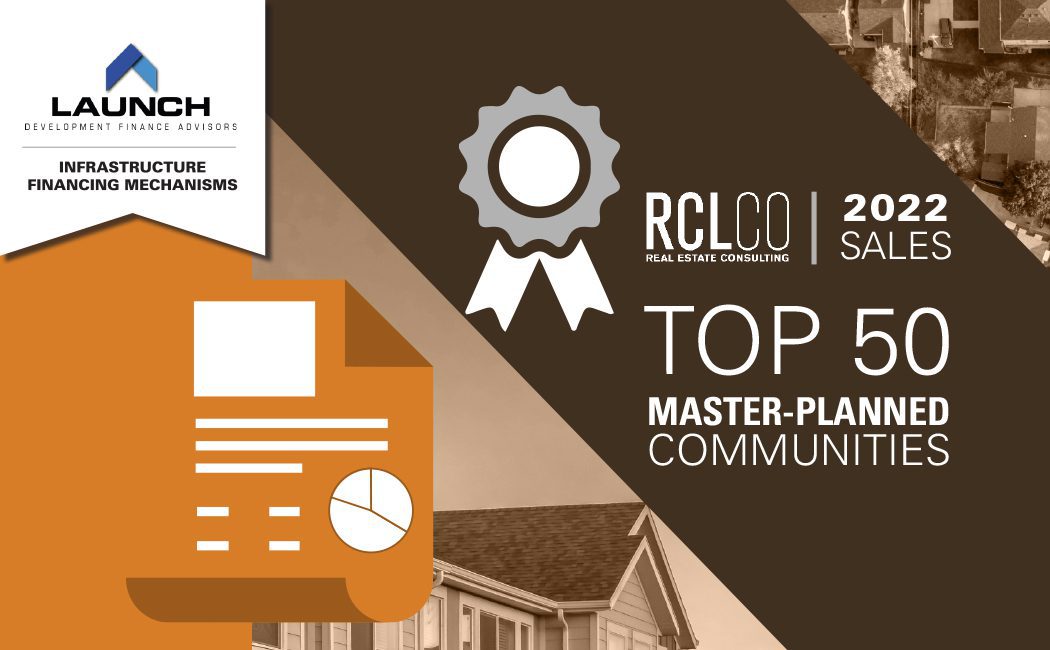2018 Housing and Community Preference Survey

The results of RCLCO’s 2018 Housing and Community Preference Survey are in and include insights on:
- Preferred community amenity rankings and variations by market area and buyer segments;
- Residential products prospects are most interested in buying;
- Differences between recent buyers and consumers who intend to buy over the next two years;
- Preferred locations for potential new home buyers;
- Purchase motivations among various household types/market segments;
- Depth of interest in master-planned communities, as well as in age-qualified retirement communities;
- The share of retirees who intend to move out of state upon retirement; and
- Much more…
Click here to explore our findings with interactive data visualizations ››
The web page version allows you to select key variables you’re most interested in, segment the results by age and/or household type, and drill down to learn more about consumer motivations and preferences in various metropolitan areas of the country.
The results are summarized below and available on our interactive web page here. For an overview, keep reading.
—-
RCLCO’s survey indicates that there is demand for a broader range of home types and sizes than is currently being provided by the industry. The survey illuminates the purchase motivations and preferences of today’s homebuyers and prospects, highlighting differences in buyer preferences for products and amenities by age, income, and geographic location. The survey compares preferences among those who are (or are not) considering a master-planned community (MPC), in terms of the residential products, amenities, and preferences most important to MPC prospects. In addition, the survey identifies key areas of unmet demand, where there is a possibility to introduce new product that captures underserved market segments. For example, 85% of new housing is single-family detached, about the same percentage as 18 years ago, yet many prospective homebuyers, particularly those with an interest in MPCs, would consider denser, attached residential products if they were more prevalent, in the right locations, and appropriately priced. Attached products could help address current affordability challenges and allow the for-sale housing industry to broaden its narrowing slice of the market as compared to before the Great Recession.
RCLCO surveyed over 23,500 persons across the U.S., which resulted in 3,430 qualified survey participants who are age 18 or over, have incomes of $50,000 or over, and either purchased a home in the last year or have intentions to purchase a home in the next 12 to 24 months. Additionally, RCLCO targeted 15 metropolitan areas, identified by RCLCO’s Momentum Index to be the most promising and active markets for the for-sale housing industry, and set a quota for each market to ensure a relatively even geographical distribution. The survey indicates that most Americans, including a majority of millennials, continue to view homeownership positively and believe it’s a good investment.
Comparing the breakdown of those who intend to purchase with those who actually purchased homes in the last year from the larger data set of 23,500, we found that more households age 35 to 54 would like to buy (41%) than the share who actually purchased in the last year (34%). This is important because 2018 is the first year in which the growth of households age 35-44 exceeds the growth of households age 25-34, such that there is a growing pool of financially stable young adults who could substantially impact the for-sale housing market, who also face high barriers to homeownership given the limited supply of new entry-level product.
Future Purchase Intent Compared with Recent Purchasers by Age
Source: RCLCO
The remainder of the survey data summarized below refers to the 3,430 survey participants across the U.S. who met our age, income, purchase history/intent, and locational criteria. Of this group, 87% of the respondents are prospects who intend to purchase in the next two years.
In terms of where buyers want to live, a plurality of future homebuyers prefer the suburbs—particularly suburbs where there is a mix of houses, shops, and businesses—though there are sizable segments that would like to live in the city, a rural area, small town, or resort.
Preferred Community Locations Among Recent Home Buyers and Prospective Buyers
Source: RCLCO
This finding is important to master-planned communities, since the best-selling communities tend to either include, or be in close proximity to, significant employment concentrations, shopping, and services. Master-planned communities remain very attractive to consumers of all ages, including about 28% of households under age 35 to age 54. About one in four respondents over age 55 would consider a master-planned community, while about 28% prefer an established neighborhood and 12% desire a second home or resort community.
Buyers’ purchasing power varies greatly by income, which influences their purchase motivations. For example, those with household incomes in the $50,000-$100,000 range are more motivated by affordability concerns, while a high percentage of upper income respondents are seeking a more exclusive area. Moving closer to employment is important across all income ranges.
How Income Influences Home Purchase Motivations
Source: RCLCO
Consumers are particularly seeking places that:
- Are in a peaceful and relaxing setting
- Provide value and a high-quality product
- Facilitate a healthy lifestyle via sidewalks, trails, and fitness facilities
- Reflect consumer success and achievements in life
- Provide opportunities to meet and interact with neighbors
- Have the newest technologies and on-trend designs
Key community characteristics respondents are seeking vary by age and household type. For example, while a majority of consumers are looking for a place that provides value and high-quality housing product, communities that reflect their success/achievements in life rank higher for younger consumers, while communities that facilitate a healthy lifestyle and provide social opportunities increase in importance as consumers get older.
Consumers are interested in a wide array of social and recreational amenities, as shown on the chart below. Trails, fitness centers, trails, pocket parks, gated entries, and resort pools remain top amenity preferences. Reflecting the trends toward online shopping, providing accommodation for package receiving also scores high on the list, which is particularly important to younger consumers. For many consumers, particularly more mature householders and “active adults,” arts and culture, food, and wine-oriented amenities are important.
Top-Ranked Community Amenity Preferences
Source: RCLCO
In addition to costs and other considerations, the importance of particular amenities to your target consumer combined with the supply of that amenity in the competitive market are key factors to weigh when considering which amenities to provide. Simply because a particular amenity scores lower on the overall list doesn’t mean that it shouldn’t be considered. For example, only 18% responded that “maker spaces” [1] are a very important community amenity relative to consumer purchase decisions, compared with 34% who said that trails are very important. But despite maker spaces being ranked lower than other amenities, they could be important to consider in some communities given their relative lack of supply. On the other hand, only 16% said golf is very important, and in some markets there is an oversupply relative to demand. Even though golf and maker spaces score similarly, one may represent more opportunity than the other. Of course, it’s important to drill down further into the survey and determine the importance of various amenities to your particular market audience, which RCLCO can assist with using our demand and segmentation analysis, as well as insights about key competitive communities. Across the spectrum of amenities, the survey results indicate that preferences vary by age, income, and region of the country, so it’s important to not just focus on the top-line results, but to dig deeper relative to the key amenities in your market.
Despite concerns about the political and social implications of the increase in the number of gated communities in some areas of the country, the survey shows that there remains a strong interest in gated entries for the greater sense of security they convey. Historically, top market areas for gated communities have included Houston, Southern California, Dallas, Atlanta, and South, Central, and Southwest Florida, and the survey suggests the interest remains widespread. Gated entries are particularly important for Florida consumers, driven in part by the strong interest from retiree households, as shown below in the comparison of Florida to Texas and key markets in the southeast.
Importance of a Gated Community by Location
Source: RCLCO
Families with children under age 18 represent 31% of all households in the U.S., but 38% of recent home purchasers. The survey shows that particular life events within families are some of the best predictors of when a household decides to buy a new home. Non-families (households without children at home) account for 69% of all households, and 62% of home purchasers. Life events, such as preparing for retirement or having recently retired, getting married, obtaining a new job, or anticipating a first child are triggers for non-family households considering a near-term home purchase. Marriage is an important home purchase trigger, with 68% of consumers purchasing their first home after they were married, and 35% purchasing within the first 24 months of marriage.
The type of home being sought varies of course by the type of household (age, family/non-family, etc.). Most are looking to upgrade in terms of quality, but younger and some middle-aged households are seeking larger homes and yards than they have now, while almost 40% of older 55+ households are looking to downsize to a smaller, lower maintenance home.
Home Purchase Considerations by Age (Respondents Aged 35-54)
Source: RCLCO
Home Purchase Considerations by Age (Respondents 55+)
Source: RCLCO
While 85% of new housing starts currently are for single-family detached homes, many market segments would consider other product types, including attached product, multifamily, or multi-generational homes. Single-family detached homes remain the most desirable residential product type, and about 80% of prospects would consider an SFD if they could find one in their desired location and price range, but 21% are also considering townhouse/plex product, and 11% are considering some form of condo. About 23% of younger buyers (under age 35) would consider a townhome, and 13% of them would consider a condo. Among those aged 35-54, 18% would consider a townhome and 9% would consider a condo. As buyers age into their 50s and 60s, the interest in single-family detached goes down somewhat, while the interest in some form of attached housing increases. The overall interest in higher-density and attached housing is greater among those considering purchasing in a master-planned community.
Households Considering an MPC are More Open to a Larger Mix of Product Types
Source: RCLCO
The combination of greater interest in products other than conventional single-family detached, and strong interest in smaller homes, suggests that more consumers would purchase non-SFD housing products in greater numbers if they were more available and in the right locations, particularly in MPCs.
Desired Home Size Varies by Consumer Age
Source: RCLCO
While there is a range of size preferences within each age group, the core age 35 to 54 group prefers the largest homes, while both the younger (under age 35) and older (age 55+) groups are interested in homes in the 1,500 to 1,999 range, and some are interested in even smaller units.
In future Advisories in this series, we will highlight some of the other key findings relative to housing preferences of retirees and other market segments.
In summary, based on the survey results, it appears there is more demand for a wider variety of product than is currently being provided, which represents an opportunity to grow the market in settings where such products are appropriate. To better understand the survey results in more detail and apply them to your specific circumstances, please feel free to reach out to the study authors or other RCLCO team members, and be sure to utilize the interactive dashboard visualizations of the survey data that allow visitors to our website to manipulate some of the variables and derive richer insights from the results; the link is here: https://tabsoft.co/2Qi0tkk. Also, if you’re interested in purchasing a custom report for one of 15 metro areas, please email aarias@rclco.com.
Article and research prepared by Gregg Logan, Managing Director, and Kelly Mangold, Vice President.
References
[1] A maker space is a place where people can gather to create, invent, tinker, explore, and discover using a variety of tools and materials.
Disclaimer: Reasonable efforts have been made to ensure that the data contained in this Advisory reflect accurate and timely information, and the data is believed to be reliable and comprehensive. The Advisory is based on estimates, assumptions, and other information developed by RCLCO from its independent research effort and general knowledge of the industry. This Advisory contains opinions that represent our view of reasonable expectations at this particular time, but our opinions are not offered as predictions or assurances that particular events will occur.
Related Articles
Speak to One of Our Real Estate Advisors Today
We take a strategic, data-driven approach to solving your real estate problems.
Contact Us









